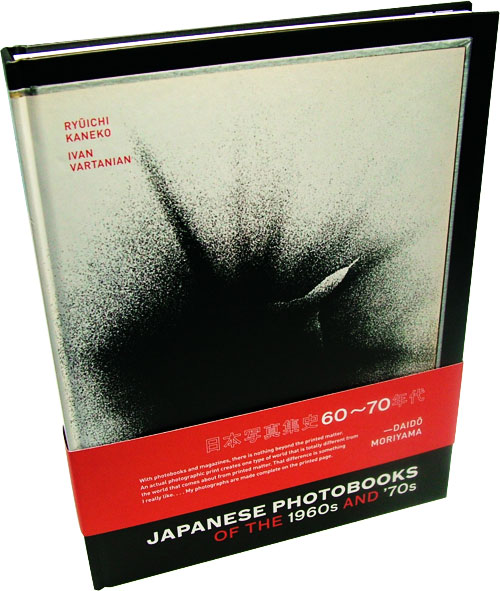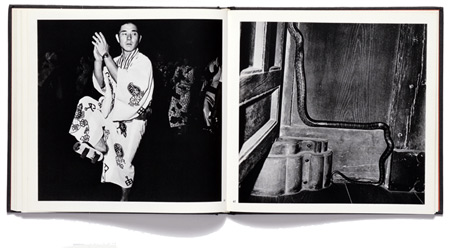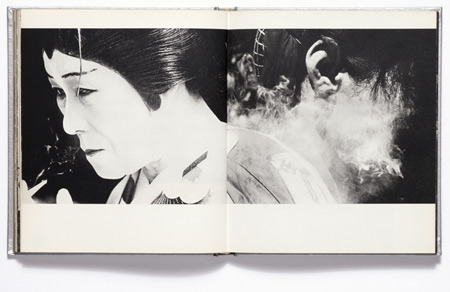 Ivan Vartanian and Ryuichi Kaneko's Japanese photobooks of the 1960s and '70s belongs to a new breed of photobook: the book on books. Martin Parr and Gerry Badger's two-volume history of the photobook is probably the best known of these, but there are other interesting examples. Jeff Ladd's Errata Editions is taking this one step further with the 'Books on Books' series which each focus on a single photobook in order to make rare and out-of-print books accessible to us mere mortals.
Ivan Vartanian and Ryuichi Kaneko's Japanese photobooks of the 1960s and '70s belongs to a new breed of photobook: the book on books. Martin Parr and Gerry Badger's two-volume history of the photobook is probably the best known of these, but there are other interesting examples. Jeff Ladd's Errata Editions is taking this one step further with the 'Books on Books' series which each focus on a single photobook in order to make rare and out-of-print books accessible to us mere mortals.
Volume I of Parr & Badger already contained a chapter on the post-war Japanese photobook with a selection of some of the major books to come out of Japan in the 60s and 70s. Japanese photobooks expands on this territory over 240 pages providing a much broader selection of photobooks, including some relatively unknown ones. Some may be surprised to see a 240-page book with such a narrow focus as this, but this period of photobook production in Japan was so rich that this could have been expanded to twelve volumes and still left a lot of room for discovery.
Much of the interest in Japanese photobooks has been focused on the magazine Provoke and publications relating to it. This is the case with Parr & Badger's selection and essay which focuses heavily on Provoke. The refreshing thing about Japanese photobooks is that it doesn't just present the best-known and respected books of the period and instead includes a selection ranging from the unavoidable Chizu (The Map) by Kikuji Kawada to a collection of anonymous student photography.

The book contains essays by Kaneko and Vartanian. Kaneko's essay recounts his personal journey with the photobook, a unique one since few people were buying photobooks when he did (to the point where he once ordered a book only to have the publisher turn up at his door to deliver it himself because he thought it would be cheaper than sending it in the mail). Vartanian focuses on drawing out the major characteristics and functions of photobooks and their production. I think this is one of the key strengths of Japanese photobooks and one which I would have liked to see developed even further. This kind of editorial exercise often ends up becoming focused on ranking or selecting the best books, in keeping with our ever-increasing love for the list (something I have somewhat hypocritically complained about before). This book successfully avoids the pitfalls of writing a 'best of' list, choosing instead to present a rounded picture of the many facets of Japanese photobook production of this period and to show how they relate to each other in order to provide the reader with a context for understanding what defines these books and what makes them great.
Japanese photobooks admittedly has an unfair advantage over its competition: it is drawn from the collection of Ryuichi Kaneko, which includes some 20,000 publications making Martin Parr's Japanese photobook collection look like a first-grade stamp collector's in comparison. This headstart isn't wasted and Japanese photobooks certainly uncovers its fair share of undiscovered gems. The forty or so books are presented with an extended essay and a healthy number of 'interior' shots (there is a nice preview of the book available on Vartanian's website) which successfully give a feel for each book's individual characteristics. For the geeks (and amongst photobook collectors that percentage is alarmingly high) there is also a wealth of technical information on the production process for each book (photobook porn if you will): who designed it, how it was printed and who by, where it was bound and, as a bonus, the original retail price just to make you wince when you find out how much these are worth today.
If you can't afford a photobook collection (or even if you can) this is one you really shouldn't miss.

Ryuichi Kaneko and Ivan Vartanian, Japanese photobooks of the 1960s and '70s, (New York: Aperture, Hardcover with bellyband, 23 x 31cm, 240 pages, ca. 400 four-color and duotone images, 2009).
Rating: Highly recommended